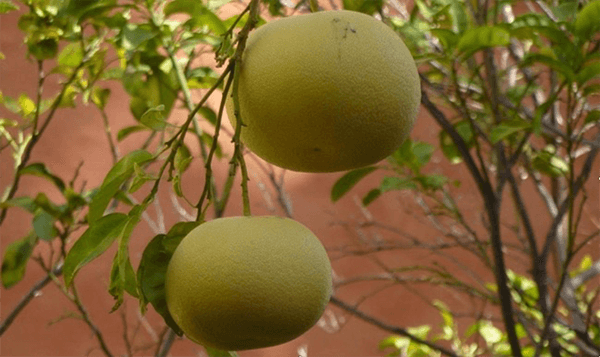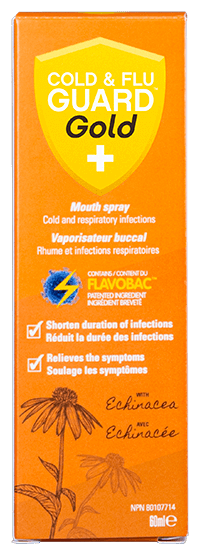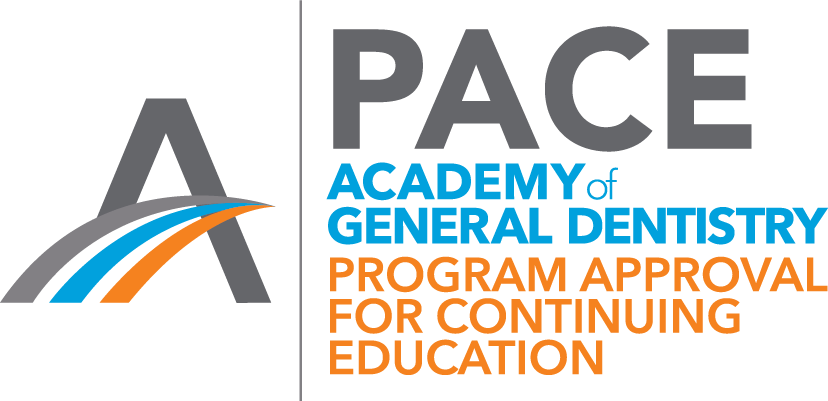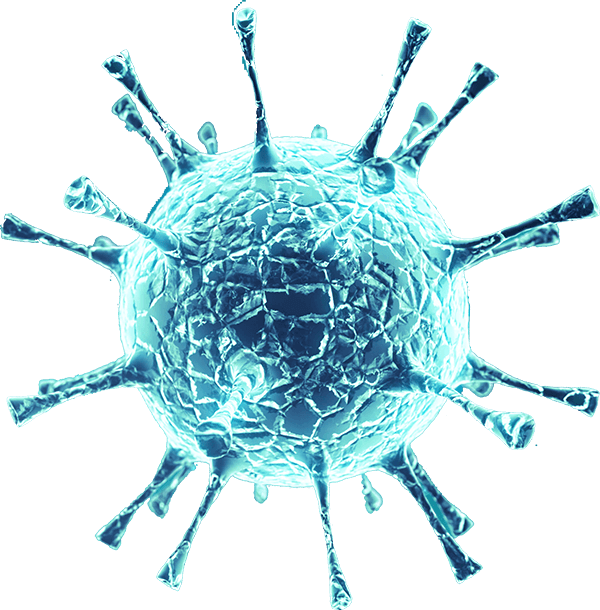FLAVOBAC™
Plant based, patent protected, specific complex of bioflavonoids
Against 21 more commun strains of cold & flu
Antibacterial & antiviral properties
MECHANISM OF ACTION
Bind with bacterial cell walls to effect extracellular and soluble proteins through hydrogen bonding which the bacteria and viruses need to survive.
Disrupt the microbial membranes including cell wall polypeptides and membrane-bound enzymes.
The bioflavonoids (hydroxylated phenols) have been shown to be toxic to microorganisms as they effect enzyme inhibition. The bioflavonoids have been found to stimulate macrophages which have an indirect negative effect on infections.

WHAT ARE BIOFLAVONOIDS?
Bioflavonoids are naturally present in plants, fruit and vegetables, there are over 6000 identifed having a wide range of uses including anti-oxidants & food ingredients. Flavonoids have been consumed by humans since the advent of human life on earth, that is, for about 4 million years. They have extensive biological properties that promote human health and help reduce the risk of diseases.
Flavonoids consist of a large group of polyphenolic compounds having a benzo--pyrone structure and are ubiquitously present in plants. They are synthesized by phenylpropanoid pathway. Available reports tend to show that secondary metabolites of phenolic nature including flavonoids are responsible for the variety of pharmacological activities [13, 14]. Flavonoids are hydroxylated phenolic substances and are known to be synthesized by plants in response to microbial infection [15]. Their activities are structure dependent. The chemical nature of flavonoids depends on their structural class, degree of hydroxylation, other substitutions and conjugations, and degree of polymerization [16]. Recent interest in these substances has been stimulated by the potential health benefits arising from the antioxidant activities of these polyphenolic compounds. Functional hydroxyl groups in flavonoids mediate their antioxidant effects by scavenging free radicals and/or by chelating metal ions [17,18]. The chelation of metals could be crucial in the prevention of radical generation which damage target biomolecules. [19,20]
As a dietary component, flavonoids are thought to have health-promoting properties due to their high antioxidant capacity both in vivo and in vitro systems [21, 22]. Flavonoids have ability to induce human protective enzyme systems. The number of studies has suggested protective effects of flavonoids against many infectious (bacterial and viral diseases) and degenerative diseases such as cardiovascular diseases, cancers, and other age-related diseases [14, 20-22]. Flavonoids also act as a secondary antioxidant defense system in plant tissues exposed to different abiotic and biotic stresses. Flavonoids are located in the nucleus of mesophyll cells and within centers of ROS generation. They also regulate growth factors in plants such as auxin [23]. Biosynthetic genes have been assembled in several bacteria and fungi for enhanced production of flavonoids [24].
HISTORY OF FLAVOBAC™
A British team of scientists has been working since the late 1990s to achieve a biotechnological breakthrough in pathogen control based on research initiated in the 1930s by Hungarian Nobel Prize winner Szent-Gyorgi on Natural Bioflavonoids. The objective was to use Nature’s own ‘weapons’ to fight pathogens in human, animals and plants. The British team identified natural sources where the top 10 most active bioflavonoids with anti-viral and anti-bacterial activity were present in high concentration. They proceeded to successfully test the plant-based complex in combination with other natural products against a large set of pathogens. Once the formulation was solid, they identified an pharmaceutical grade, sustainable and natural method of extraction.
Flavobac™ was one of the bioflavonoid complex born from this research.
Bioflavonoids have been consumed by humans since the advent of human life on earth, that is, for about 4 million years. They have extensive biological properties that promote human health and help reduce the risk of diseases. The United States Department of Agriculture has estimated that in the United States, adults generally consume 200–250 mg of bioflavonoids each day. [XX] FLAVOBAC is a natural bioflavonoid powder extract from bitter oranges. The main component are the citrus flavanones naringin and neohesperidin. A wide spectrum of beneficial effects has been attributed to naringin including cardiovascular, hypolipidemic, anti-atherosclerotic, antidiabetic, neuroprotective, hepatoprotective, and anticancer activities [14, 15]. The FDA consider naringin and neohesperidin as GRAS. As indicated in the Food, Drug and Cosmetic act 21 USC 321(s), GRAS substances are exempt from the premarketing clearance. They stated that “Flavonoids comprise a group of naturally occurring compounds which are among the most ubiquitous in the plant kingdom. They are found in every family and in nearly every species of the higher plants.” Kuhnau (1976) stated that flavonoids are the most common and active antioxidants.” ”Naringin has been accorded GRAS status as a flavoring agent in food (21 CFR 182.20. Office of the Federal Register, 1981) and hesperidin has been given similar status ( Buckely, 1968.)”
FLAVOBAC™ HAS BEEN TESTED EFFECTIVELY AGAINST:
-
Viruses
- Human Rhinoviruses (HRVs)
- SARS-coV (Urbani)
- Influenza A
- H1N1
- H3N2
- H5N1
- Herpes simplex virus type 1
- Herpes simplex virus type 2
- Herpes zoster
- Hepatitis A
- Hepatitis B
- Human Immunodeficiency Virus (HIV)
- African swine fever
- Coxsackievirus (Hand-foot-and-mouth disease)
- Gumboro disease
- Newcastle disease
-
Protozoa
- Histomonas meleagridis
- Giardia lamblia
- Entamoeba histolytica
- Blastocystis hominis
-
Yeast and Fungi
- Aspergillus flavus
- Aspergillus niger
- Aspergillus terreus
- Botrytis cinerea
- Candida albicans
- Candida glabrata
- Chaetomium globosum
- Cladosporium
- Colletotrichum sp.
- Fusarium sp.
- Mucor sp.
- Penicillium sp.
- Penicillium digitatum
- Penicillium funiculosum
- Penicillium italicum
- Penicillium roqueforti
- Phomopsis portal
- Pullularia pullulans
- Pythium spp
- Trichophyton interdigitale
- Trichophyton mentagrophytes
-
Bacteria
- A. viscosus
- Campylobacter jejuni
- Diplodia natalensis
- C. difficile
- Escherichia coli (E. coli)
- Geotrichum candidum
- Klebsiella pneumonia
- Lactobacillus Pentosus
- Legionella pneumophila (NCTC 11192)
- Listeria monocytogenes
- Mycobacterium fortuitum (NCTC 8573)
- Proteus vulgaris
- P. gingivalis
- P. intermedia
- Pseudomonas aeruginosa (ATCC 15442)
- Staphylococcus aureus (MRSA clinical strain)
- S. gordonii
- S. sanguinis
- T. denticola


PROTECT YOURSELF AND YOUR TEAM FROM DIFFICULT STRAINS OF VIRUSES WITH FLAVOBAC™ AND HYALURONIC ACID
Professionals ConsumersPublications
- Antimicrobial activity of Citrox® (Flavobac™) bioflavonoid preparations against oral microorganisms. S. J. Hooper, M. A. O. Lewis, M. J. Wilson and D. W. Williams, 17 June 2010 ©British Dental Journal 2010; 210: E22
- Antimicrobial activity of novel mouth rinses against planktonic cells and biofilms of pathogenic microorganisms, Malic et al. Microbiology Discovery 2013, [LINK]
- 3. Eradication of Staphylococcus aureus Catheter-Related Biofilm Infections Using ML:8 and Citrox S. Hogan, M. Zapotoczna, N. T. Stevens, H. Humphreys, J. P. O’Gara, E. O’Neilla, [LINK]
Data on file:
- Citrox / Flavobac effective against Streptococcus pneumoniae (pneumococcus). University of Leicester, UK
- Virucidal assay of Citrox /Flavobac against H5N1 found that the compound was virucidal at all concentrations above 0.001% - Retroscreen Laboratories, UK
- Virucidal assay of Citrox /Flavobac against Urbani SARS, Influenza A, Human Rhinovirus, and Human Immunodeficiency virus found that the compound was virucidal at all concentrations above 0.25% against all viruses- Retroscreen Laboratories, UK
- Anti-viral efficacy of Citrox / Flavobac against H3N2 in the animal ferret model showed that the compound was effective against H3N2 and clinically effective to reduce the severity of symptoms for the animals. Retroscreen Laboratories, UK
- Virucidal activity of Citrox against norovirus was complete within 1 minute of exposition. Microbiotest, Virgnia, USA
- Citrox/Flavobac passed the AOAC Use Dilution Test – Healthcare for S. aureus, P. aeruginosa, S. enterica when exposed for 10 min at 20⁰C. Microbiotest, Virgnia, USA
- Citrox/Flavobac demonstrated efficacy against all C. Difficile strains tested [117, VP110463, 162, and 209]. Citrox/Flavobac 1% MIC was comparable to metronidazole values. The tests also showed that Citrox/Flavobac 5% killed all spores of all strains after 5 min contact time.
- Citrox 1% mixed with mice drinking water killed plasmodium parasite (malaria) in their blood. Citrox killed trypanosome parasite (sleeping sickness) in-vitro and delayed infection in animal model. Department of Parasitology, University of Glasgow, UK
- Citrox decontaminated natural water from E.coli and Enterococcus. It also significantly reduce the count of other coliforms. AFBI, Northern Ireland, UK
References
- Lu, C.-W.; Liu, X.-F.; Jia, Z.-F. 2019-nCoV transmission through the ocular surface must not be ignored. Lancet Lond. Engl. 2020, 395, e39.
- To, K.K.-W.; Tsang, O.T.-Y.; Chik-Yan Yip, C.; Chan, K.-H.; Wu, T.-C.; Chan, J.M.C.; Leung, W.-S.; Chik, T.S.-H.; Choi, C.Y.-C.; Kandamby, D.H.; et al. Consistent detection of 2019 novel coronavirus in saliva. Clin. Infect. Dis. Off. Publ. Infect. Dis. Soc. Am. 2020. doi:org/10.1093/cid/ciaa149
- Peng, X.; Xu, X.; Li, Y.; Cheng, L.; Zhou, X.; Ren, B. T ransmission routes of 2019-nCoV and controls in dental practice. Int. J. Oral Sci. 2020, 12, 9.
- Zou, L.; Ruan, F.; Huang, M.; Liang, L.; Huang, H.; Hong, Z.; Yu, J.; Kang, M.; Song, Y.; Xia, J.; et al. SARSCoV- 2 Viral Load in Upper Respiratory Specimens of Infected Patients. N. Engl. J. Med. 2020, 382, 1177-1179.
- Sultan, A.S.; Kong, E.F.; Rizk, A.M.; Jabra-Rizk, M.A. The oral microbiome: A Lesson in coexistence. PLoS Pathog. 2018, 14, e1006719.
- Zaura, E.; Nicu, E.A.; Krom, B.P.; Keijser, B.J.F. Acquiring and maintaining a normal oral microbiome: current perspective. Front. Cell. Infect. Microbiol. 2014, 4, 85.
- Deo, P.N.; Deshmukh, R. Oral microbiome: Unveiling the fundamentals. J. Oral Maxillofac. Pathol. JOMFP 2019, 23, 122–128.
- Lim, Y.; Totsika, M.; Morrison, M.; Punyadeera, C. Oral Microbiome: A New Biomarker Reservoir for Oral and Oropharyngeal Cancers. Theranostics 2017, 7, 4313–4321.
- Lamarre, A.; Talbot, P.J. Effect of pH and temperature on the infectivity of human coronavirus 229E. Can. J. Microbiol. 1989, 35, 972–974.
- Geller, C.; Varbanov, M.; Duval, R.E. Human coronaviruses: insights into environmental resistance and its influence on the development of new antiseptic strategies. Viruses 2012, 4, 3044–3068.
- Tonoyan, L.; Vincent-Bugnas, S.; Olivieri, C.-V.; Doglio, A. New Viral Facets in Oral Diseases: The EBV Paradox. Int. J. Mol. Sci. 2019, 20, 5861.
- Giacaman, R.A.; Asrani, A.C.; Gebhard, K.H.; Dietrich, E.A.; Vacharaksa, A.; Ross, K.F.; Herzberg, M.C. Porphyromonas gingivalis induces CCR5-dependent transfer of infectious HIV-1 from oral keratinocytes to permissive cells. Retrovirology 2008, 5, 29.
- M. F. Mahomoodally, A. Gurib-Fakim, and A. H. Subratty, Antimicrobial activities and phytochemical profiles of endemic medicinal plants of Mauritius. Pharmaceutical Biology, vol. 43, no. 3, pp. 237–242, 2005.
- A. K. Pandey, Anti-staphylococcal activity of a pan-tropical aggressive and obnoxious weed Pariheniumhisterophorus: an in vitro study. National Academy Science Letters, vol. 30, no. 11-12, pp. 383–386, 2007.
- R. A. Dixon, P. M. Dey, and C. J. Lamb, Phytoalexins: enzymology and molecular biology. Advances in Enzymology and Related Areas of Molecular Biology, vol. 55, pp. 1–136, 1983.
- E. H. Kelly, R. T. Anthony, and J. B.Dennis, Flavonoid antioxidants: chemistry, metabolism and structure-activity relationships. Journal of Nutritional Biochemistry, vol. 13, no. 10, pp. 572–584, 2002.
- S. Kumar, A. Mishra, and A. K. Pandey, Antioxidant mediated protective effect of Parthenium hysterophorus against oxidative damage using in vitro models. BMC Complementary and Alternative Medicine, vol. 13, article 120, 2013.
- S. Kumar and A. K. Pandey, Phenolic content, reducing power and membrane protective activities of Solanum xanthocarpum root extracts. Vegetos, vol. 26, pp. 301–307, 2013.
- M. Leopoldini, N. Russo, S. Chiodo, and M. Toscano, Iron chelation by the powerful antioxidant flavonoid quercetin. Journal of Agricultural and Food Chemistry, vol. 54, no. 17, pp. 6343–6351, 2006.
- S. Kumar, A. Gupta, and A. K. Pandey, Calotropis procera root extract has capability to combat free radical mediated damage. ISRN Pharmacology, vol. 2013,Article ID 691372, 8 pages, 2013.
- N. C. Cook and S. Samman, Review: flavonoids-chemistry, metabolism, cardioprotective effects and dietary sources. Journal of Nutritional Biochemistry, vol. 7, no. 2, pp. 66–76, 1996. 12 The ScientificWorld Journal
- C. A. Rice-Evans, N. J. Miller, P. G. Bolwell, P. M. Broamley, and J. B. Pridham, The relative antioxidant activities of plantderived polyphenolic flavonoids. Free Radical Research, vol. 22, no. 4, pp. 375–383, 1995.
- G. Agati, E. Azzarello, S. Pollastri, and M. Tattini, Flavonoids as antioxidants in plants: location and functional significance Plant Science, vol. 196, pp. 67–76, 2012.
- F.Du, F. Zhang, F. Chen et al., Advances inmicrobial heterologous production of flavonoids. African Journal of Microbiology Research, vol. 5, no. 18, pp. 2566–2574, 2011.
- F. Pourmorad, S. J.Hosseinimehr, and N. Shahabimajd, Antioxidant activity, phenol and flavonoid contents of some selected Iranian medicinal plants. The African Journal of Biotechnology, vol. 5, no. 11, pp. 1142–1145, 2006.
- S. Kumar and A. K. Pandey, Antioxidant, lipo-protective and antibacterial activities of phytoconstituents present in Solanum xanthocarpum root. International Review of Biophysical Chemistry, vol. 3, no. 3, pp. 42–47, 2012.
- Hooper, S.J., et al., Antimicrobial activity of Flavobac™ bioflavonoid preparations against oral microorganisms. 2011. 210(1): p. E22.
- Aqil, F., I. Ahmad, and Z.J.T.j.o.B. Mehmood, Antioxidant and free radical scavenging properties of twelve traditionally used Indian medicinal plants. 2006. 30(3): p. 177-183.
- Fernandes, M., et al., Antioxidant and antimicrobial activities of Psidium guajava L. spray dried extracts. 2014. 60: p. 39-44.
- Tait, S., et al., Antiviral activity of substituted homoisoflavonoids on enteroviruses. 2006. 72(3): p. 252-255.
- Sindt, C.W., et al., Dendritic immune cell densities in the central cornea associated with soft contact lens types and lens care solution types: a pilot study. 2012. 6: p. 511.
- Chen WY, Abatangelo G. Functions of hyaluronan in wound repair. Wound Repair Regen. 1999;7:79-89.
- Kavasi RM, Berdiaki A, Spyridaki I, Corsini E, Tsatsakis A, Tzanakakis G, Nikitovic D. HA metabolism in skin homeostasis and inflammatory disease. Food Chem Toxicol. 2017;101:128-138.
- Valachová K, Volpi N, Stern R, Soltes L. Hyaluronan in Medical Practice. Curr Med Chem. 2016;23:3607-3617.
- Müller F. Oral hygiene reduces the mortality from aspiration pneumonia in frail elders. J Dent Res. 2015;94:14S–16S.
- Paju S, Scannapieco FA. Oral biofilms, periodontitis, and pulmonary infections. Oral Dis. 2007;13:508–512.
- Linden GJ, Herzberg MC; Working group 4 of joint EFP/AAP workshop. Periodontitis and systemic diseases: a record of discussions of working group 4 of the Joint EFP/AAP Workshop on Periodontitis and Systemic Diseases. J Clin Periodontol. 2013;40 Suppl 14:S20–S23.


